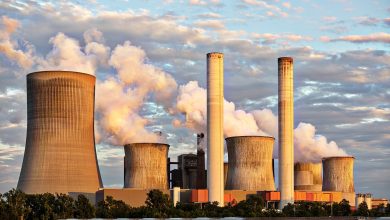Oil, Gas, and the Paris Agreement

In December of 2015, 197 countries of the United Nations Framework Convention on Climate Change signed the Paris Agreement in response to “the urgent threat of climate change on the basis of the best available scientific knowledge” (Paris Agreement, 2015). It was the first agreement of its kind, as it bound nations around the world to make changes that would limit global warming to 2 degrees Celsius over pre-industrial times, aiming for 1.5 degrees Celsius over time.
The agreement indirectly calls out the fossil fuel industry — as well as government support of these activities — and attempts to balance out human production of greenhouse gases and the ability to absorb them from the atmosphere.
Goals and actions
Article Two of the Paris Agreement sets out the multi-faceted response to climate change. To do this, nations signed on to adapt to new temperatures of the environment and limit future changes to the overall global temperature. However, the timetable on this initiative is an open-ended “as soon as possible” target. The 197 counties accounted for the abilities of individual countries to afford the transition to more eco-friendly manufacturing and development. If ratified, a country has until 2020 to turn in its long-term emissions plan, after that achievements will be reviewed on a five-year rotation.
Some scientists argue that fossil fuel production would need to slow or shut down before the 2020 date detailed in the agreement. At this time, countries that signed the pledge must submit a plan to tackle emissions in order to lower the impact on the environment.
Some of these long- and short-term steps include investing in renewable energy and moving funds away from the development that produces high amounts of greenhouse gas emissions.
 Photo by Martin Adams on Unsplash
Photo by Martin Adams on Unsplash
Carbon dioxide
In 2017, the CDP found that 70 percent of greenhouse gases came from 100 energy companies. Burning fossil fuels (coal, oil, and natural gas) releases carbon dioxide (CO2) that is then trapped in the atmosphere and retains heat. In order to lessen the impact, nations are focused on decreasing production and dependency on carbon (as greenhouse gas emissions are measured by the carbon equivalent). Scientists and environmental advocates link these toxins to climate change, pointing fingers at the fossil fuel industry as being the largest hurdle to curtail emissions in order to achieve the goals in the Paris Agreement.
What that means for the fossil fuel industry is the potential threat to the way business is done. Several companies, including Shell, have started investing in renewable energy development in response to the focus on climate change (Bousso, 2016).
Oil and gas companies
The Convention reports 187 of the 197 countries have ratified the Paris Agreement; the United States has made arrangements to withdraw from the agreement. In the energy field, there has been some nod to the implications of oil and gas on the climate. About a year after the meeting in Paris, these producers publicly recognized their impact on the plant and developed an investment fund to take their place in the fight against climate change. During this time of transition, oil and gas companies have set goals to achieve low emission or net-zero goals, as they continue to manufacture these natural resources.
The industry faces pressure, as it is expected to take action for cleaner production as well as maintain a profitable business. Fourteen companies, including BP, Chevron, ExxonMobil, Saudi Aramco formed the Oil and Gas Climate Initiative. In 2016, the organization announced the OGCI Climate Investments fund, which invests in technologies to capture carbon emissions. So far, it has invested $6.3 billion in low-carbon technologies.
Companies like BP, Chevron, and others are expected to cap emissions while also keeping up with demand, though several are doing more by means of renewable resources. ExxonMobil has put away billions of dollars in the past year for basic research in low-carbon technologies. It also entered into a $500 million joint venture to genetically engineer algae to produce renewable fuel from sunlight and CO2. Chevron is a leader in renewable infrastructure and has made smaller investments in alternative energy (wind, solar, geothermal). And in France, Total pledged to generate 20 percent of its oil and gas from low-carbon products within 20 years.
The United States and the Paris Agreement
Despite intentions to refuse the Paris Agreement from the White House, 23 states are following their own plan to combat greenhouse gases, with 24 agreeing to slash emissions by more than a quarter by 2025.
As of October 2019, the Trump administration was preparing to officially pull out of the Paris Agreement, though no formal confirmation was reported from the State Department. The current leadership of the federal government listed the Paris Agreement as a “job-killing” bad deal as a reason for pulling out of the international pledge.
Fossil fuel emissions were on a steady decline in 2018, something the New York Times credited to cheap natural gas, renewable energy, and the displacement of “dirtier coal-fired power” (Friedman, 2019). However, updated information from the Energy Information Administration found that fossil fuel emissions trend was moving backward, having raised 2.7 percent in 2018.
Sources
Nina Chestney, Susanna Twisdale (2019). “Factbox: Climate targets – the devil’s in the detail” Reuters.
Ron Bousso (2016). “Exclusive: Oil majors join forces in climate push with renewable energy fund.” Reuters
Center for Climate and Energy Solutions (2019). “U.S. State Greenhouse Gas Emissions Targets.”
Cardon Data Project (2019). “Case Study: How an oil and gas company survives the low-carbon transition”
Oil and Gas Climate Initiative (2019). “Oil and Gas Climate Initiative announces progress towards methane target and new CCUS initiative to scale up actions towards climate goals”



